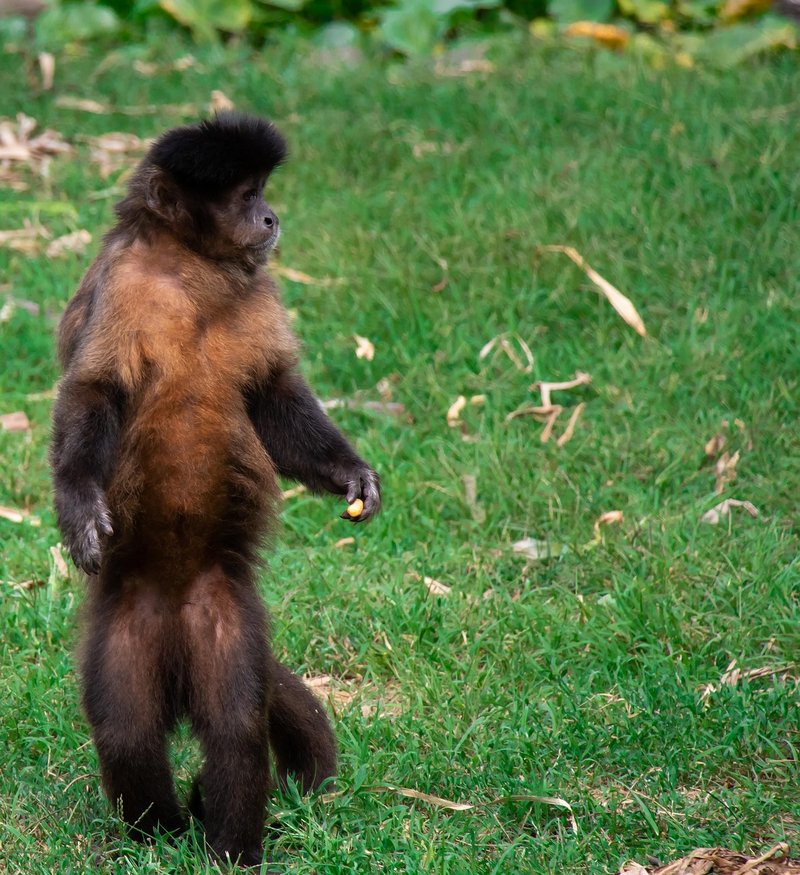
Honestly, it’s a bit like trying to figure out how to train a new pet; there’s a lot of information out there, but not all of it is reliable. The tufted capuchin is a vibrant species with unique behaviors, and separating fact from fiction makes the journey of learning about them all the more fun. So, let’s dive into some common myths and misconceptions about tufted capuchins, and see what’s real and what’s not.
Myth 1: Tufted Capuchins Are Just Like Any Other Monkey
You might think that all monkeys are pretty much the same, but that’s not the case with tufted capuchins. These little creatures are part of a larger family known as Cebidae, which also includes squirrel monkeys and spider monkeys. Each species has its distinct behaviors and social structures.
Tufted capuchins are particularly known for their intelligence. They are often compared to primates like chimpanzees in terms of problem-solving abilities. Here’s the thing: they can use tools! Yes, you heard that right! In the wild, they’ve been observed using stones to crack open nuts. This isn’t just a cute quirk; it shows a level of cognitive ability that’s quite advanced among animals.
So, while you might spot similarities in appearance or size with other monkeys, it’s important to remember that tufted capuchins have their unique place in the primate world.
Myth 2: Tufted Capuchins Are Domesticated Pets
Now, it’s tempting to think of tufted capuchins as potential pets. After all, they’re downright adorable with their playful antics and expressive faces. But here’s a reality check: they are *not* domesticated animals. Tufted capuchins have complex social needs and require a lot of space to roam and express their natural behaviors.
Imagine trying to keep a toddler entertained 24/7 in a small apartment—sounds exhausting, right? That’s a glimpse of what it’s like to care for a tufted capuchin. They thrive in social groups and become stressed if isolated or confined. Many people mistakenly believe they can train them like dogs, but capuchins can be quite stubborn and require specialized care that most homes cannot provide.
If you’re looking for a pet, it’s wise to consider animals that have been bred to live alongside humans, rather than taking the route of a wild animal like the tufted capuchin.
Myth 3: Tufted Capuchins Are Always Friendly
It’s easy to fall for the charming images of tufted capuchins seen in popular movies and documentaries. They often play the role of the jester, quick to entertain with their antics. However, you might be wondering if they are always as friendly as they seem. Spoiler alert: not always!
While tufted capuchins can be social and enjoy interacting with their peers and, occasionally, humans, they can also be quite territorial. In the wild, they form strong bonds within their troop, and introducing a stranger can sometimes lead to aggression. Just like humans, their mood can change based on various factors, including stress, environment, and social dynamics.
So, if you encounter a tufted capuchin, approach with respect and caution. They have feelings and boundaries just like the rest of us!
Myth 4: They’re Just Cute and Funny Animals
Yes, tufted capuchins are undeniably cute and funny, but there’s so much more to them than meets the eye. These monkeys are incredibly intelligent and capable of complex behaviors that go beyond simple playfulness.
For instance, tufted capuchins have been observed engaging in cooperative behaviors, like foraging for food together. This isn’t just a social gathering; it’s a strategic effort. They use vocalizations to communicate about potential dangers or food sources. When you consider their social structures in the wild, you realize that there’s a lot of teamwork going on.
Their intelligence means they require mental stimulation, which can be challenging when in captivity. Providing enrichment that mimics their natural environment is crucial for keeping them engaged and happy. So, next time you see a tufted capuchin, remember: they are more than just a punchline in a funny monkey video.
Myth 5: Tufted Capuchins Are All the Same
When you think about different animals, they can often share traits but still have their unique personalities. The same goes for tufted capuchins. Just like humans, they exhibit a wide range of individual differences.
Some may be more curious and adventurous, while others might be shy or more reserved. This variability is influenced by factors like their environment, upbringing, and social interactions. Some tufted capuchins may become more playful when they feel safe or are around their peers, while others may require time to warm up to new experiences.
In captivity, caretakers often notice these differences, resulting in varying levels of adaptability. For anyone working with or studying these monkeys, understanding these individual traits can make a big difference in care and interaction.
Myth 6: They Can Easily Adapt to Human Environments
It’s a common belief that wild animals can adapt to living alongside humans without much trouble. However, with tufted capuchins, this isn’t quite true. While they are clever and resourceful, their natural instincts are deeply ingrained.
In many cases, contact with humans can lead to stress, aggression, or behavioral issues. Remember that they are used to the vastness of forests, not confined spaces. This means that their needs for space, diet, and social interaction might not be met in a domestic setting.
When tufted capuchins do end up in human environments, they often require intensive care and specialized knowledge. So when thinking about their adaptability, it’s crucial to remember that they thrive best in their natural habitats.
In exploring these common myths and misconceptions about tufted capuchins, it becomes clear that there’s more to these lively monkeys than the surface-level stereotypes. They are intelligent, complex beings with specific needs and behaviors that reflect their wild heritage.
By understanding the realities of tufted capuchins, we can appreciate their place in the world more fully and support conservation efforts aimed at preserving their natural habitats. Whether you’re a casual observer or a devoted fan of these fascinating creatures, let’s celebrate the uniqueness of tufted capuchins together—just like they celebrate life swinging through the treetops! Remember, knowledge is key to loving and respecting the wild, even from afar.

